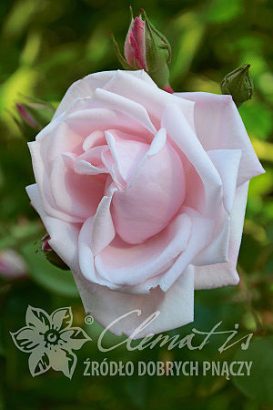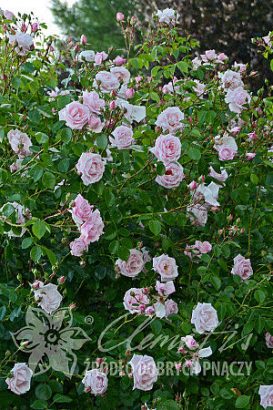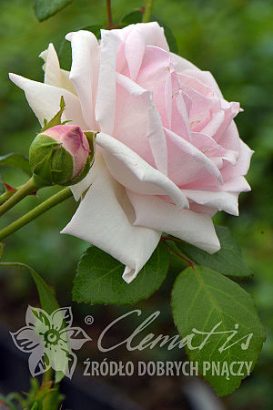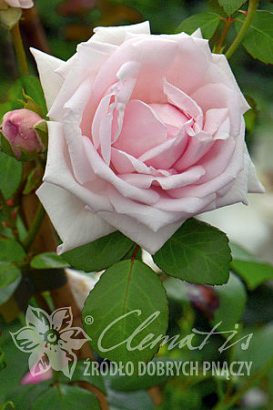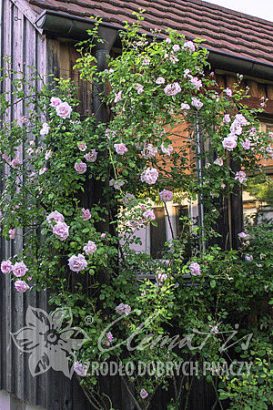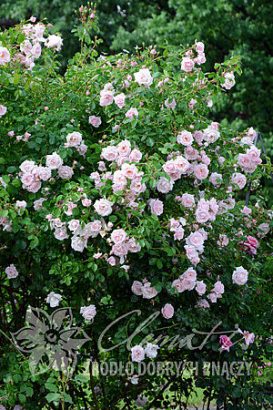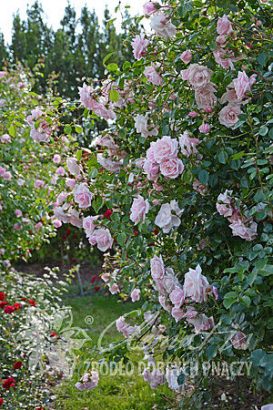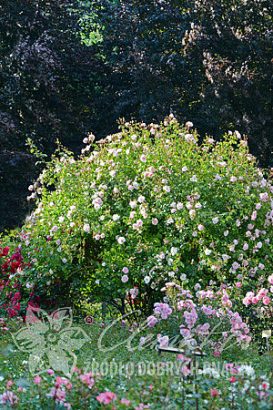Rosa ‘New Dawn’
Climbing rose 'New Dawn'| Decoration form | fragrant flowers |
|---|---|
| Color of flowers | light pink |
| Plants height | 3-4 m |
| Flowering month | VI, VII, VIII, IX, X |
| Annual growth | 1-2 m |
| Aspect | sun, 3/4 sun, 1/2 sun |
| Frost hardiness | Zones 6 - 8 |
One of the oldest and most valuable climbing rose cultivars. Blooms generously throughout summer with numerous pale pink flowers. Healthy, resistant and easy to maintain.
WHAT IT LOOKS LIKE: Pale pink flowers ca. 8 cm across, fully-double, gathered in large inflorescences; petals distinctively curled outwards. Bloom abundantly from the end of June till September. Leaves rather small, composed with small, glossy leaflets. Annual shoots are very long – up to 3-4 m – thin and supple, easy to train over supports.
HOW IT GROWS: A primitive climber – does not climb over supports but leans on them. The height of the plant depends on the support size, in Poland it usually reaches 3-4 m. The support needs to be large and sturdy.
WHERE TO PLANT: Grows best in sunny and semi-shaded sites. Well-adapted to nearly every type of soil, but does not tolerate compacted, heavy or sandy and droughty ground. Thrives in light, moderately permeable soil of slightly acidic or neutral pH. Frost hardy (zone 6-8).
HOW TO PLANT AND MAINTAIN: Before planting immerse the plant container in water for 10-30 min. Place the root ball in a 40 x 40 x 40 cm hole with a 10 cm layer of well-rotten manure or compost, 0.5-1 cm deeper than it was before. Fill the hole with fertile soil. Does not require regular pruning. The plant is robust and produces numerous shoots in summer. To maintain the shrub’s habit, shoots need to be tied to supports regularly as they grow.
HOW TO APPLY: The rose may be planted along natural supports, usually trees with loose, open crowns which allows a higher growth. The cultivar is recommended for growing along larger supports in parks and gardens of various styles. It will also grow over trellises, gates, walls and fences as well as arbours and pergolas. It’s flexible and easily follows the support’s shape.
ORIGIN: Raised by Henry A. Dreer, Somerset Nursery, 1930.

